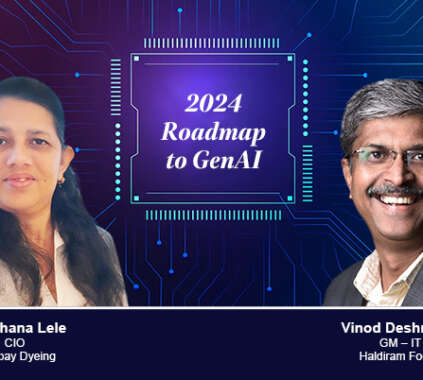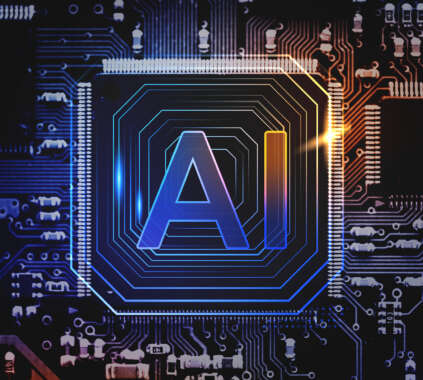Generative AI or GenAI has perhaps had the fastest uptake in the history of enterprise with vast majority of the organizations trying to leverage the technology for various use cases. According to Gartner, more than 80% of enterprises will have used GenAI APIs or models, or deployed GenAI-enabled applications in production environments by 2026, up from less than 5% in 2023. But to get there, enterprises have an uphill task ahead of them.
In an email interview with CIO Dimension, Lakshminarasimman Raghavan, Group VP Technology, Publicis Sapient, shares what it takes to advance GenAI projects from PoC to production.
Edited excerpts:
Majority of the GenAI projects in 2023 focused experimentation and proof of concepts. Do you see GenAI use cases moving from initial pilots and PoC to production this year?
As GenAI emerges as a fundamental capability for IT organisations, there is a pressing need for a transformative shift in capability development. Building Gen AI capabilities in-house is imperative to keep pace with the rapid evolution and widespread adoption of this technology across various industries. While trying out new technologies through PoCs shows what’s possible, true insights emerge when solutions are deployed into real-world scenarios. To effectively test and refine solutions, the time spent on PoCs must be streamlined.
IT leaders can direct their focus on specific challenges, working to transform them into tangible realities. This approach facilitates the rigorous testing and refinement solutions within live environments. Many of the organizations that we work with are in the PoC stages with some of them starting to rollout their solutions to production this year.
What are some of the key GenAI trends that will emerge and dominate through the year?
GenAI is expected to unlock new opportunities for automation, efficiency, and innovation across enterprise operations, leading to significant advancements in various domains. Here are some key trends:
- Automated code generation: GenAI will revolutionize software development by accelerating code creation processes. This will lead to more cost-effective and rapid development cycles, enabling IT organizations to deliver solutions more efficiently.
- In-house GenAI capabilities: Organizations will increasingly invest in developing in-house GenAI capabilities to address specific challenges and enhance operational efficiency. This shift will reduce reliance on external partners and vendors, allowing companies to have more control over costs and resources. These capabilities not only include just technical aspects but also aspects such as knowledge in biases, ethical aspects and operational aspects such as testing, optimizing and tuning GenAI solutions etc.
- Transformation of talent landscape: The emergence of GenAI AI as a core capability will transform the engineering and IT talent landscape. Skilled professionals with expertise in GenAI will become indispensable, driving the adoption and implementation of this technology across various industries.
- Focus on scalable solutions: IT leaders will prioritize scalable solutions over PoCs to harness the full potential of GenAI. By implementing and refining solutions in live environments, organizations can derive real insights and drive tangible outcomes, rather than investing time in experimental trials.
- Streamlining of data: The fundamental building block of any GenAI based solution is the underlying data ranging from code all the way to behavioral and transactional data. Organizations will need to invest in streamlining their data to enable effective GenAI implementations.
A transformation in the engineering and IT talent landscape is anticipated, with Gen AI skills emerging as essential. A new wave of engineers will rise, armed with the expertise necessary to unleash the potential of this technology. Organizations are expected to internalize GenAI endeavours, driven by the imperative to manage costs and bolster operational efficiency, diverging from sole reliance on public cloud infrastructure.
What could potentially be the top challenges for CIOs as they try to deploy GenAI at scale within the enterprises?
A few aspects that CIOs must consider while deploying GenAI at scale include:
- Aligning with business goals: CIOs must seamlessly integrate transformative technologies, like GenAI, with business objectives. This requires a proactive approach to understand GenAI’s influence and equip teams with the necessary tools to outline viable business cases. The challenge lies in decoding GenAI’s impact and aligning technological advancements with overarching business imperatives.
- Prioritizing data engineering: Establishing a robust Core Data Architecture is crucial for adapting to the evolving tech landscape. CIOs are prioritizing efforts in data engineering, focusing on tasks such as formatting data appropriately, optimizing data locations for model training, and assessing existing data platforms. This concentrated attention and investment in data engineering are essential for leveraging GenAI effectively.
- Building in-house capabilities: Developing in-house GenAI capabilities requires significant investment in talent, resources, and infrastructure. CIOs need to evaluate the extent to which they rely on external partners and vendors versus building these capabilities internally. Securing the necessary talent and allocating resources to sustain and evolve these capabilities over time presents a considerable challenge as well as opportunity. This involves evaluating the costs, talent acquisition, and resource allocation needed for either approach.
These factors underscore the need for CIOs to strategically align with business teams, emphasize collaboration, and proactively decode GenAI to ensure successful deployment at scale while navigating the complexities of organizational transformation and technological advancement.













